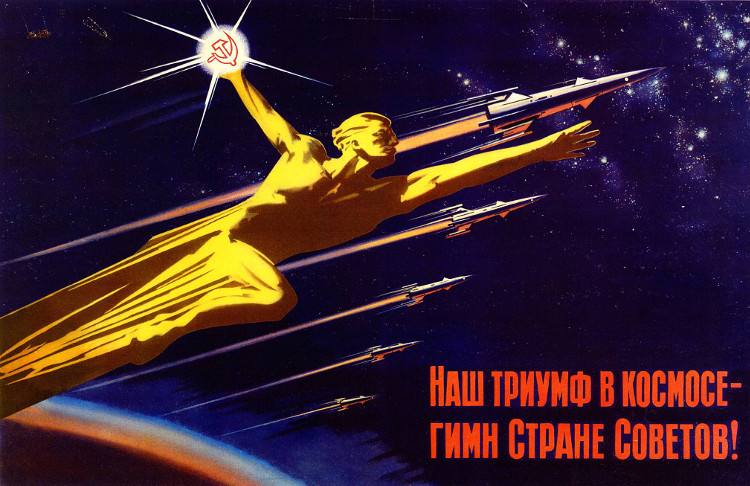Russians and groundbreaking studies for humanity
Many modern scientific achievements today began with pioneering Russians and groundbreaking studies that contributed to the development of human civilization.
Early on, the Law of conservation of mass was proposed by chemist Mikhail Vasilyevich Lomonosov in 1748. In the early stages of the electrodynamics industry, Vasily Petrov discovered the photoelectric effect in 1802.
Nikolay Umov proposed the basic concept of Umov-Poynting vector and was the first science to show the relationship between mass and energy in 1873. Alexander Popov was the first person to invent radio waves.

Russia has made important contributions to the scientific development of mankind.
Entering the 20th century, Russia / Soviet Union was one of the countries with the strongest and most developed physics in the world. Alexander Friedmann was the first scientist to propose an expansion of the universe in 1922 and influence cosmology in this century.
Dmitri Ivanenko was the first to propose a proton-neutron model of atomic nucleus in 1932 and a nuclear shell model in the same year. Georgiy Gamov is the author of Big Bang theory. And also, many other scientists have received the Nobel Prize for their discoveries and discoveries for science.
Law of conservation of mass
First coined by the Russian chemist Mikhail Vasilyevich Lomonosov in 1748, when he weighed sealed stoppers containing metal powders before and after heating, and realized their mass remained unchanged, despite the Chemical chemistry has occurred with metals in bottles.
Chemical elements
To make it easier to look at chemical elements based on its chemical properties, many scientists have found a way to organize them but who propose how to list them into a periodic table and disseminate it. widely, in 1869.
His periodic table, though not the first, was published, but in addition to known elements, he used trends in the periodic table to predict the nature of the missing elements.

Dmitri Ivanovich Mendeleev, the father of the periodic table of modern chemical elements.(Photo: Wikipedia).
The importance of atomic numbers for the organization of the periodic table is not recognized until the existence and properties of protons and neutrons are studied in more detail.
In addition to the elements Gallium, Germanium, Hafnium, Protactinium, Technetium are chemical elements predicted by theory by Dmitri Mendeleev before they were officially discovered later by experiment, the Russians also discovered the New element for the periodic table.
The elements Ruthenium, Nobeli, Dubni, Flerovi, Moscovi , . were discovered by Soviet and Russian scientists from observing the decay associated with these elements.
Artificial satellite
is the world's first artificial satellite launched into Earth orbit. The satellite was launched into space by missile R-7 on October 4, 1957 in the context of the Cold War.
The satellite operates for 3 months, flying 1,440 around the Earth at a height of more than 900 km. The launch of the satellite into space has surprised the United States and the West, and opened the race to space between the great powers and from that era the space began.

Sputnik-1 satellite is the first artificial satellite to orbit Earth.(Photo: Wikipedia).
Spaceship manned
After a series of unmanned missions or animal experiments, the Soviet Union has continued to make history by starting a manned spacecraft for the first time in the world. chosen to be the pilot for this flight, he crossed the Earth's atmosphere and became the first person to fly into space.
At 9:7 am Moscow time on April 12, 1961, the Vostok-1 was launched from the Baykonur Cosmodrome. The flight lasts 108 minutes, reaching the highest point to more than 320 km. Yuri Gagarin landed on a field not far away safely.

Yuri Gagarin was the first person to fly into space.(Photo: Roscosmos).
Space station
Salyut 1 station was the first space station launched in the low orbit of the Earth by the Soviet Union on April 19, 1971. After Salyut 1, there were five more space stations that were successfully launched.
This space station was launched amid the successful landing of the Apollo 11 mission on the Moon, which was a Soviet station to serve as a hub for their Moon missions. Mir-2 (DOS-8) is the last space station of the Salyut program, still used today and becomes part of the International Space Station (ISS).
- The groundbreaking project studies how to raise the dead
- Genetic mutations help Russians survive World War II
- 1/3 of Russians believe the Sun revolves around the Earth
- Ancient Egyptians and rituals broke ground
- The Russians plan to launch a luxury hotel on the ISS station, selling 4 million USD for a sightseeing ticket
- 2012: What do we know about humanity?
- Breaking ground to build huge telescopes
- 20,000 scientists simultaneously warned about the fate of humanity
- Australia studies spider venom to treat breast cancer
- Useful discoveries about DNA winning the 2015 Nobel Prize in Chemistry
- 13 groundbreaking scientific inventions that people borrow from nature
- Silly errors can put many studies at risk of being revoked
 'Fine laughs' - Scary and painful torture in ancient times
'Fine laughs' - Scary and painful torture in ancient times The sequence of numbers 142857 of the Egyptian pyramids is known as the strangest number in the world - Why?
The sequence of numbers 142857 of the Egyptian pyramids is known as the strangest number in the world - Why? History of the iron
History of the iron What is alum?
What is alum?